Mechanical Pencil With Thick Lead
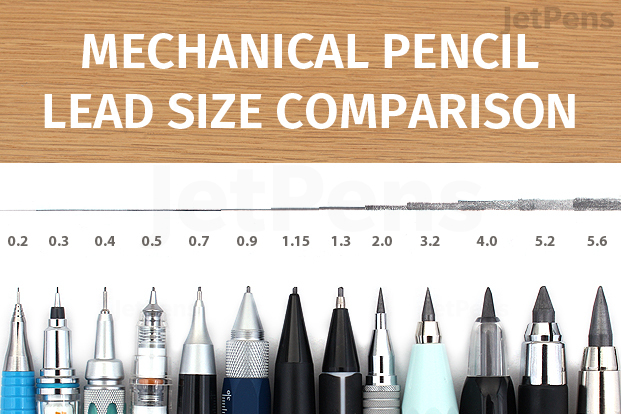
Mechanical pencil leads come in such a variety of widths that there is a size for every purpose, from fitting complex equations into tiny spaces to shading broad swaths of paper. At the same time, the lines they make can change dramatically as the leads wear down or are used at different angles. This variability means that similarly-sized leads can often be used interchangeably, although there will still be subtle differences between them. In this guide, we'll show you each lead size in relation to its neighbors, the kinds of lines it can make, and what it's best for. Skip down to our video demonstration to see representatives of each lead size category used in a single drawing.
COMPARISON OF ALL LEAD SIZES

This image shows lines from each lead size, in order from smallest to largest. We made all of the samples with dull, non-pointed leads to demonstrate the widest line each lead could produce. Larger leads are typically used sharpened and can make thinner lines than those depicted here.
Some lead sizes are functionally equivalent to each other and differ only in name. These are: 0.3 mm and 0.35 mm, 0.9 mm and 1 mm, 1.1 mm, 1.15 mm, and 1.18 mm, and 3.15 mm and 3.2 mm. The 5.5 mm and 5.6 mm sizes are also extremely similar to each other. We used only one sample to represent each of these size groups in the image above.

Fine leads from 0.2 mm - 0.4 mm are ideal for writing in small spaces and adding whisper-thin details to art. They also suit people with very small handwriting. They are more breakable that most leads, so it's best to use them with pencils that have lead-protecting features.
The near-mythical 0.2 mm mechanical pencil lead is the size to use for the finest of fine details and most compact equations. Its tiny tip lets you write legibly in super-tight spaces like Bible margins and planner squares. Because it is so thin and fragile, this lead size needs extra care to prevent breakage.
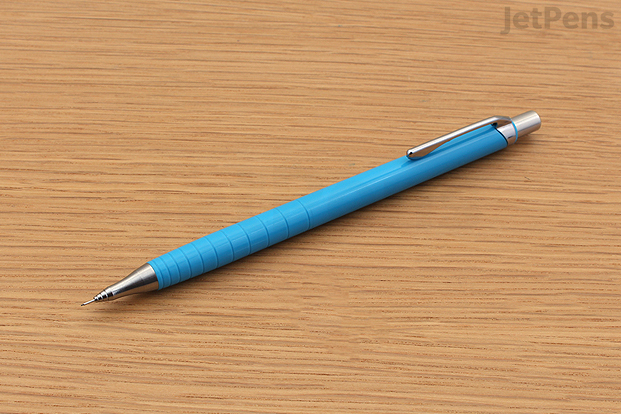
The Pentel Orenz is the only pencil capable of handling delicate 0.2 mm leads. It features a sliding sleeve that reinforces the lead along its entire length. This protects it from heavy pressure as long as you don't extend the lead past the tip. The sleeve slides back just enough as the lead wears down to allow you to write. The Pentel Orenz is also available in 0.3 mm and 0.5 mm. Visit our Guide to Lead Guard Mechanical Pencils to learn more about the Orenz.
0.3 mm leads aren't as tiny as 0.2 mm, but they're still quite small and much more widely available. They're also a bit smoother and stronger, so this is a good size for most people who want a fine lead.
Note: Rotring makes a lead that they label as 0.35 mm. This is generally equivalent to 0.3 mm but may be slightly wider. We tested it in an assortment of non-Rotring pencils and found that while we could not get it to extend in a 0.3 mm Zebra DelGuard mechanical pencil, it worked perfectly in 0.3 mm Pentel Graph Gear 1000 and Alvin Draft-Matic drafting pencils.
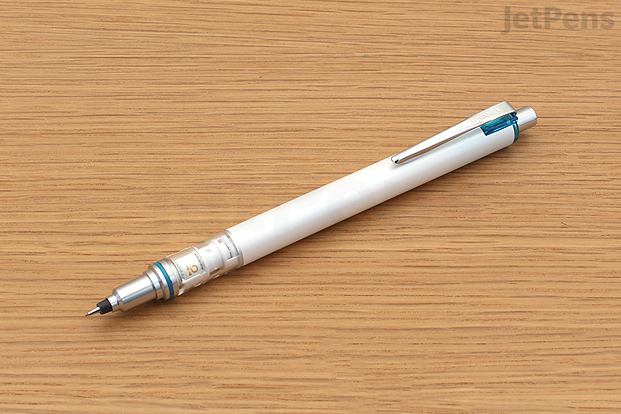
The Uni Kuru Toga Advance is the perfect pencil for 0.3 mm lead. Its sliding lead sleeve protects the 0.3 mm lead from writing pressure and the Kuru Toga's unique rotation mechanism keeps the lead sharp. Since it never gets dull, a 0.3 mm lead in a Kuru Toga seems almost as fine as a 0.2 mm lead in another pencil.
The 0.4 mm lead size is a bit less precise and more durable than 0.3 mm. It's not as common for writing, but it is a good in-between size to try if 0.5 mm is a bit too big for you. Its use is typically limited to artists and drafters who appreciate having a lead in every size. Most mechanical pencils skip 0.4 mm, so you'll have to visit the realm of drafting pencils to use this lead size.
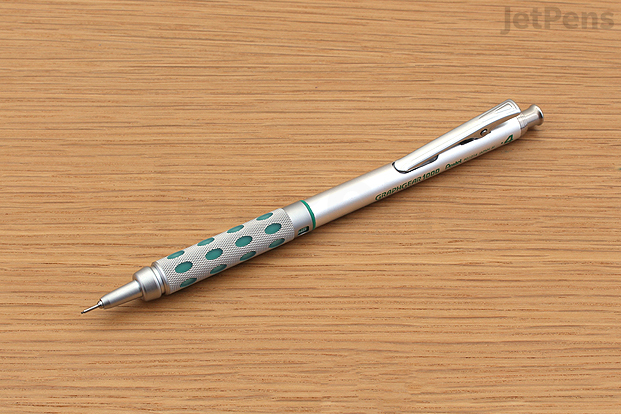
The Pentel Graph Gear 1000 is a strong contender for the title of best drafting pencil. Its aluminum build is solid without being heavy. Its balanced weight is complemented with an unusual grip section that combines knurling and rubber for comfort, as well as a retractable tip that won't poke through your pocket. The pencil is completed with a sturdy, spring-loaded binder clip. Read our Guide to Drafting Pencils to learn more about this and other drafting favorites.
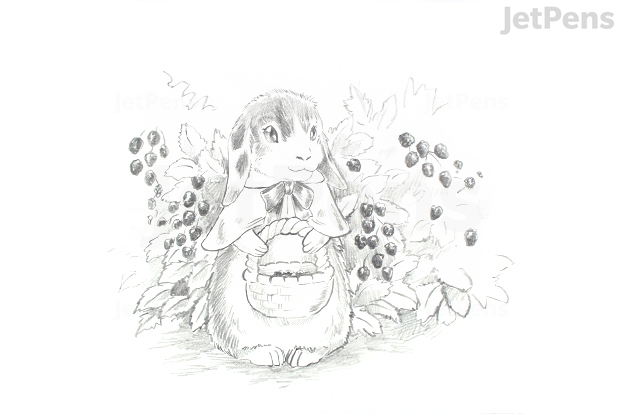
The difference between 0.5 mm and 0.7 mm leads comes down to writing style. Both are small enough to be easy to read at most writing sizes yet strong enough to stand up to typical writing pressure with minimal breakage. Heavy-handed writers and those with larger handwriting will do better with the extra durability and width of 0.7 mm leads, while people with a lighter touch often appreciate the smaller line size of 0.5 mm leads. Both sizes are suitable for drawing details at most sketching sizes.
This size offers a great balance of precision and strength that works well with most people's handwriting. 0.5 mm is the most common mechanical pencil size, so it gives you the widest variety of pencil features and styles to choose from.
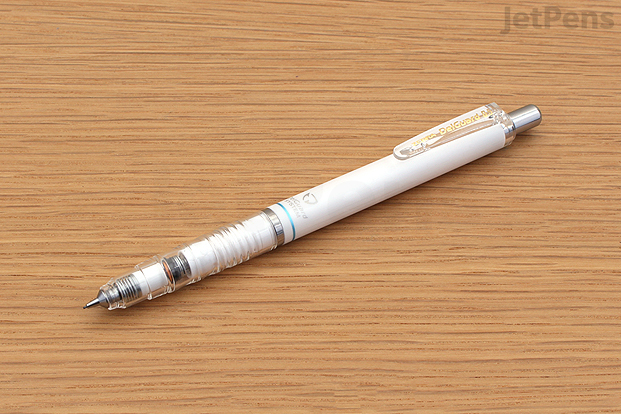
If you're concerned about possible lead breakage, the Zebra DelGuard is the pencil for you. Its highly-engineered lead guarding system combines a dynamic lead sleeve and cushioning spring to shield the lead from both vertical and sideways pressure. The DelGuard comes in three body styles to accommodate different tastes, each of which has a different grip material: lightweight plastic, rubber, and metal.
If you want something a bit more sturdy than 0.5 mm, try stepping up to 0.7 mm. These leads are a good choice for heavy-handed writers and people with larger handwriting. They also feel a bit smoother than 0.5 mm.

The Pentel Sharp Kerry is our all-round top pick in our guide to the Best Mechanical Pencils. This distinctive mechanical pencil boasts undeniable good looks and an unusual capped design that lets you advance lead with the end button whether the cap is posted or not.
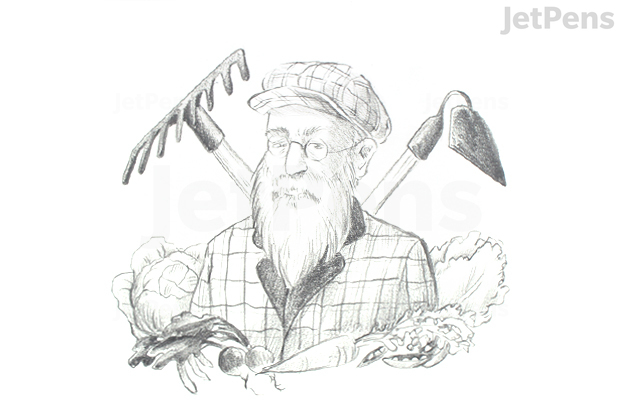
These uncommon leads are ideal for people who press with a very heavy hand, have extra-large handwriting, or make bold sketches. They feel significantly smoother than smaller sizes because their wider tips don't dig into the paper, and their increased strength lets artists produce more tonal variation by pressing harder. They can also yield an interesting calligraphic effect as their tips wear down.
Of all the wide mechanical pencil leads, 0.9 mm is the size you're most likely to encounter. These thick leads make bold lines and are comfortable to use due to the way they glide across the paper. Their extra strength also means that you can extend the lead farther without it breaking, which lets you keep writing longer before you have to pause to advance the lead.
Some leads in this size are about half as long as typical pencil leads. These specialized leads work best in Autopoint mechanical pencils and other pencils with short lead advancement mechanisms. Most pencils can't use the last 10 mm of lead, so although it is possible to use short leads in place of regular leads, you will need to replace the lead quickly if you do so.
Note: Rotring makes a lead that they label as 1 mm. This is generally equivalent to 0.9 mm. We had no trouble using it in an assortment of 0.9 mm non-Rotring pencils.
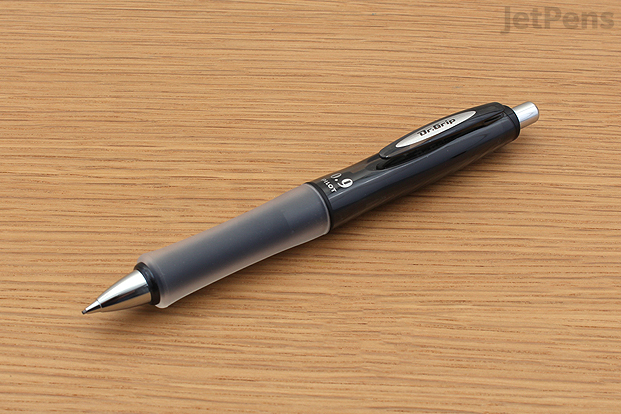
The Pilot Dr. Grip G-Spec is perfect for people who write for long periods of time. It is carefully designed to reduce fatigue. The pencil's weight is perfectly balanced to sit easily in your hand, and its special double-layer grip provides an ideal combination of softness and stability. With its easy-writing 0.9 mm lead and convenient shaker mechanism, this pencil is a dream to write with.
The slightly larger 1.1 mm, 1.15 mm, and 1.18 mm lead sizes are all equivalent in terms of diameter. They are mostly restricted to vintage-inspired pencils, which often have a twist lead extension mechanism.
Some leads in this size are about half as long as typical pencil leads. These are intended for use in pencils like the Autopoint Jumbo and E+M Move. Most pencils can't use the last 10 mm of lead, so although it is possible to use short leads in place of regular leads, you will need to replace the lead quickly if you do so.
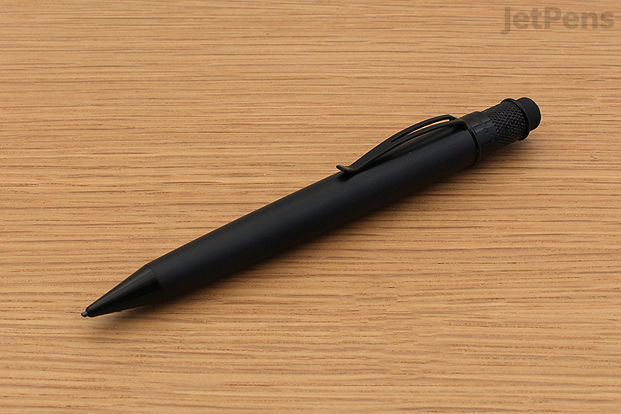
This stylish mechanical pencil features striking retro looks and a mechanism that extends the lead when you twist the pencil's knurled crown. Its chunky eraser allows for quick fixes and is easy to remove when it's time to refill the lead.
This is the largest lead size that falls into the "mechanical pencil" category. It gives a wide line that is easy to move quickly across the paper. It's great for loose, sweeping movements that suit sketching and brainstorming sessions.
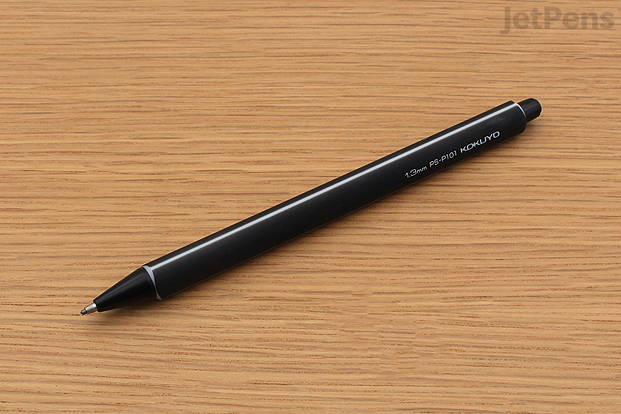
Kokuyo Enpitsu Mechanical Pencils are thoughtfully designed to meld the best characteristics of wooden and mechanical pencils. They come in two varieties. The standard Enpitsu has a lightweight, rubberized triangular body that is extremely comfortable to hold and deliberately simple. Its tip retracts to prevent accidental pokes, and lead can be added through the back of the pencil without removing any parts or covers. The Type S adds a few more features: a hexagonal grip section that evokes traditional wooden pencils, a retractable guide pipe, a clip labeled with the lead size, and a large twist eraser.
Mechanical pencils with leads that are at least 2 mm wide are called lead holders. Like wooden pencils, their leads can be sharpened to control their line width. You can sharpen them with specialized sharpeners called lead pointers or use other tools, like knives and sandpaper. These thicker lead sizes are often used to give extra support to easily-broken soft graphite lead grades and colored leads.
Another key difference between lead holders and typical mechanical pencils is their lead advancement system. Many lead holders use a drop clutch lead advancement mechanism rather than the incremental advancement mechanism most mechanical pencils use. Read our Guide to Lead Holders to learn more.

Sample made with 2 mm lead.
2 mm is the most common lead holder size and the size that most closely approximates the lead inside a wooden pencil. These leads can be sharpened for detail work or used at an angle for gesture work and shading large areas. They also come in several lead grades. If you like the versatility of wooden pencils but prefer tools with a consistent length and weight over time, a 2 mm lead holder is the perfect choice.
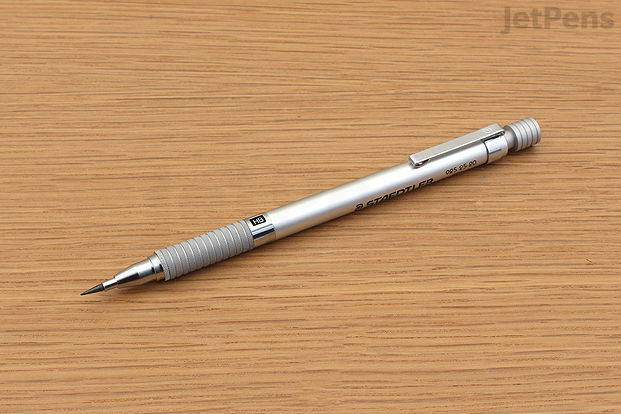
The Staedtler Silver Series 2 mm Lead Holder is the top choice in our Guide to Lead Holders, and for good reason. Its overall design echoes the look of a drafting pencil, with a lead grade indicator and knurled grip. It has a lightweight but sturdy aluminum body that feels balanced and comfortable to hold. Unusually for a lead holder, the Staedtler Silver Series features an easy-to-use incremental lead advancement mechanism like those found in standard mechanical pencils.
These two lead sizes are close enough to be visually interchangeable, and we've found that lead holders intended for either size can switch between them with no trouble. They offer a bit more coverage than 2 mm leads but can still be sharpened to a relatively small point. Their extra durability is especially handy for using softer leads that are more prone to crumbling under pressure.

Although it's called a drafting pencil, the 3.15 mm Lamy Scribble features the wide lead and drop clutch mechanism of a lead holder. It is beautifully balanced and has a handsome matte black plastic body that feels almost like wood. The body is subtly shaped for comfort.
These extra-wide lead holder leads can make many different line widths depending how sharp they are and the angle they are used at. Generally speaking, they are best for broad strokes and shading. Their size also lets artists press down harder without the leads breaking, which makes them capable of a large degree of tonal variation.

Sample made with 4 mm lead.
These leads are noticeably bigger than 3.15 mm and 3.2 mm leads and are great to use for quickly sketching out ideas and filling in space. Almost all of the available 4 mm leads fall into the soft B grades.
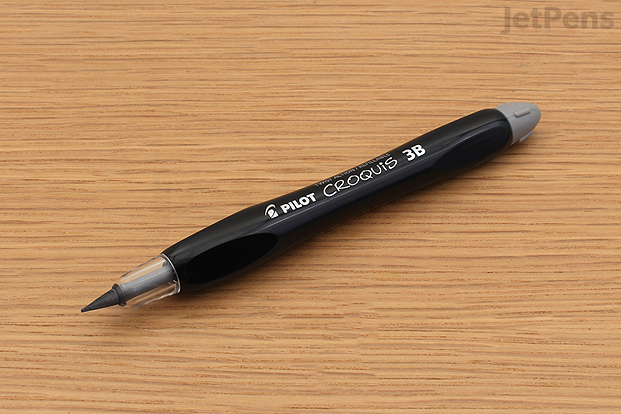
These inexpensive lead holders use a twist mechanism that lets you easily control how much lead you let out. They are lightweight and have an ergonomically-shaped grip section that makes them good for long sketching sessions.
These leads are the widest of the wide. They are great for drawing bold outlines and quickly covering large areas but can still be sharpened to produce a surprising level of detail. The three sizes in this group are essentially interchangeable when it comes to use, but only partially so in terms of the lead holders they fit in. We found that larger lead holders could hold the smaller leads securely but that larger leads did not fit into smaller holders.
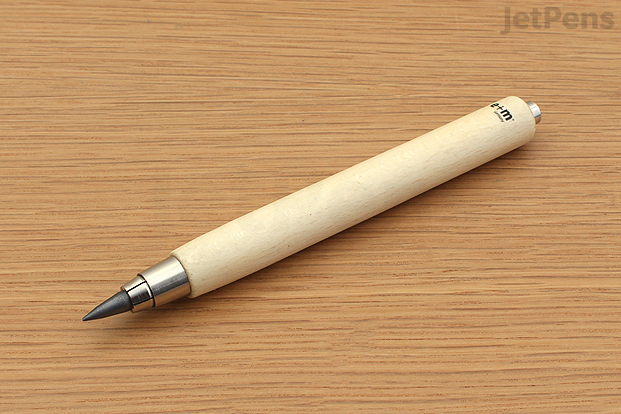
Long body 5.5 mm E+M Workman lead holders are the perfect size for capturing movement and form rather than getting caught up in detail. Their length lets you hold them near the end and use the whole arm and shoulder to make expressive, sweeping strokes.They are made from real beech wood and have a satisfyingly solid feel.
LEAD SIZES IN ACTION
A single mechanical pencil can achieve a variety of effects if you change the pressure or angle you use it at, but each lead size has its own characteristics and strengths. Check out the video below to see how we used different lead sizes in one drawing!
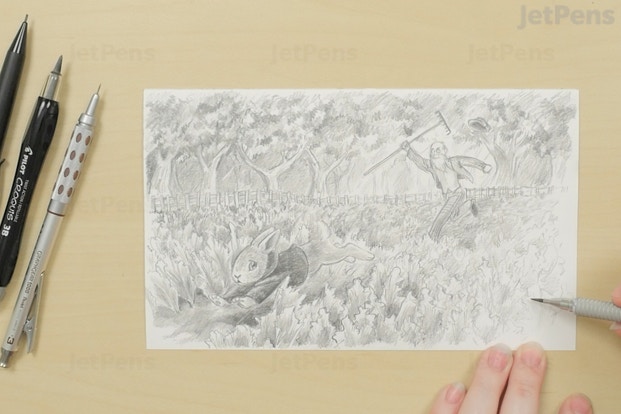
Mechanical pencils with leads that are at least 2 mm wide are called lead holders. Both this and the 3.2 mm size are highly versatile, as they are easier to sharpen and use for fine details than broader leads but can also be used at an angle for shading and loose drawing styles.
Lead sizes from 0.9 mm to 1.3 mm fall just below the lead holder category. They are ideal for heavy-handed users and achieving tonal variation. Like other mechanical pencil leads, they are typically used unsharpened. They are good for sweeping sketching styles and adding details to large-scale drawings.
0.5 and 0.7 mm are the most common sizes of mechanical pencil leads. They're often used for general writing, but they're also small enough to draw details. Both of these sizes are thick enough to have good break resistance, but you may prefer a 0.7 mm lead if you tend to press hard.
Leads from 0.2 to 0.4 mm are ideal for fine details and small-scale drawings. The super-slender 0.2 mm lead size can draw clearly defined lines in the tiniest spaces, while 0.3 and 0.4 mm offer slightly less precision with greater strength.
The biggest leads range from 4 mm to more than 5 mm wide. These leads can make many different line widths depending on how sharp they are, but they are generally best for broad strokes. These extra-wide leads shine when used for expressive drawing, shading large areas, and making large-scale sketches.
COMPARE THESE PENCILS
Do you want to see what our recommended mechanical pencils and lead holders have to offer, side by side? Use our Comparison Tool to view their specifications.
Our writers draw on their personal expertise, consult our in-house subject matter experts, and do extensive research to make our guides as accurate and comprehensive as possible. We then test every finding that makes it through the research stage. Only the techniques and tools whose performance we personally confirm make it into our guides as recommendations.
CONCLUSION
Leads for mechanical pencils and lead holders come in many different sizes, each with its own special characteristics. What is your favorite lead size? Let us know in the comments below!
| 0.2 mm - 0.4 mm: The Thinnest Mechanical Pencil Leads | ||
|---|---|---|
| Lead Size | Recommended Pencil | Best For |
| 0.2 mm | Pentel Orenz Mechanical Pencils | Super-fine details and writing in tiny spaces like book margins and planner squares |
| 0.3 mm | Uni Kuru Toga Advance Mechanical Pencils | Almost any detail work. Similar to 0.2 mm, but a bit more durable. |
| 0.4 mm | Pentel Graph Gear 1000 Drafting Pencils | Artists who need something a little finer than 0.5 mm. |
| 0.5 mm - 0.7 mm: All-Purpose Mechanical Pencil Leads | ||
| Lead Size | Recommended Pencil | Best For |
| 0.5 mm | Zebra DelGuard Mechanical Pencils | Most handwriting sizes. Excellent balance of precision and strength. |
| 0.7 mm | Pentel Sharp Kerry Mechanical Pencils | Most handwriting sizes, but with extra strength and smoothness. |
| 0.9 mm - 1.3 mm: Thick Mechanical Pencil Leads | ||
| Lead Size | Recommended Pencil | Best For |
| 0.9 mm | Pilot Dr. Grip G-Spec Shaker Mechanical Pencils | Making bold, smooth lines and brainstorming. |
| 1.1 mm - 1.18 mm | Retro 51 Tornado Mechanical Pencils | Making bold, smooth lines and brainstorming. |
| 1.3 mm | Kokuyo Enpitsu Mechanical Pencils | Making bold, smooth lines and brainstorming. |
| 2 mm - 3.2 mm: Standard Lead Holder Leads | ||
| Lead Size | Recommended Pencil | Best For |
| 2 mm | Staedtler Silver Series 2 mm Lead Holder | Imitating wooden pencils, detail work when sharpened, or shading when used at an angle. |
| 3.15 mm - 3.2 mm | Lamy Scribble Drafting Pencil | Both detail and shading work, but are more durable and can achieve a bit more coverage than 2 mm. |
| 4 mm - 5.6 mm: Large Lead Holder Leads | ||
| Lead Size | Recommended Pencil | Best For |
| 4 mm | Pilot Croquis Lead Holders | Quick sketching and filling in space. |
| 5.2 mm - 5.6 mm | E+M Workman Long Clutch Lead Holders | Bold sketching, shading, and achieving tonal variation. |

We used a lead from every size category to draw this picture of Peter Rabbit and Farmer McGregor. Check out the video above to see how we used each one!
Mechanical Pencil With Thick Lead
Source: https://www.jetpens.com/blog/mechanical-pencil-lead-size-comparison/pt/958
Posted by: scullydescuseence.blogspot.com

0 Response to "Mechanical Pencil With Thick Lead"
Post a Comment